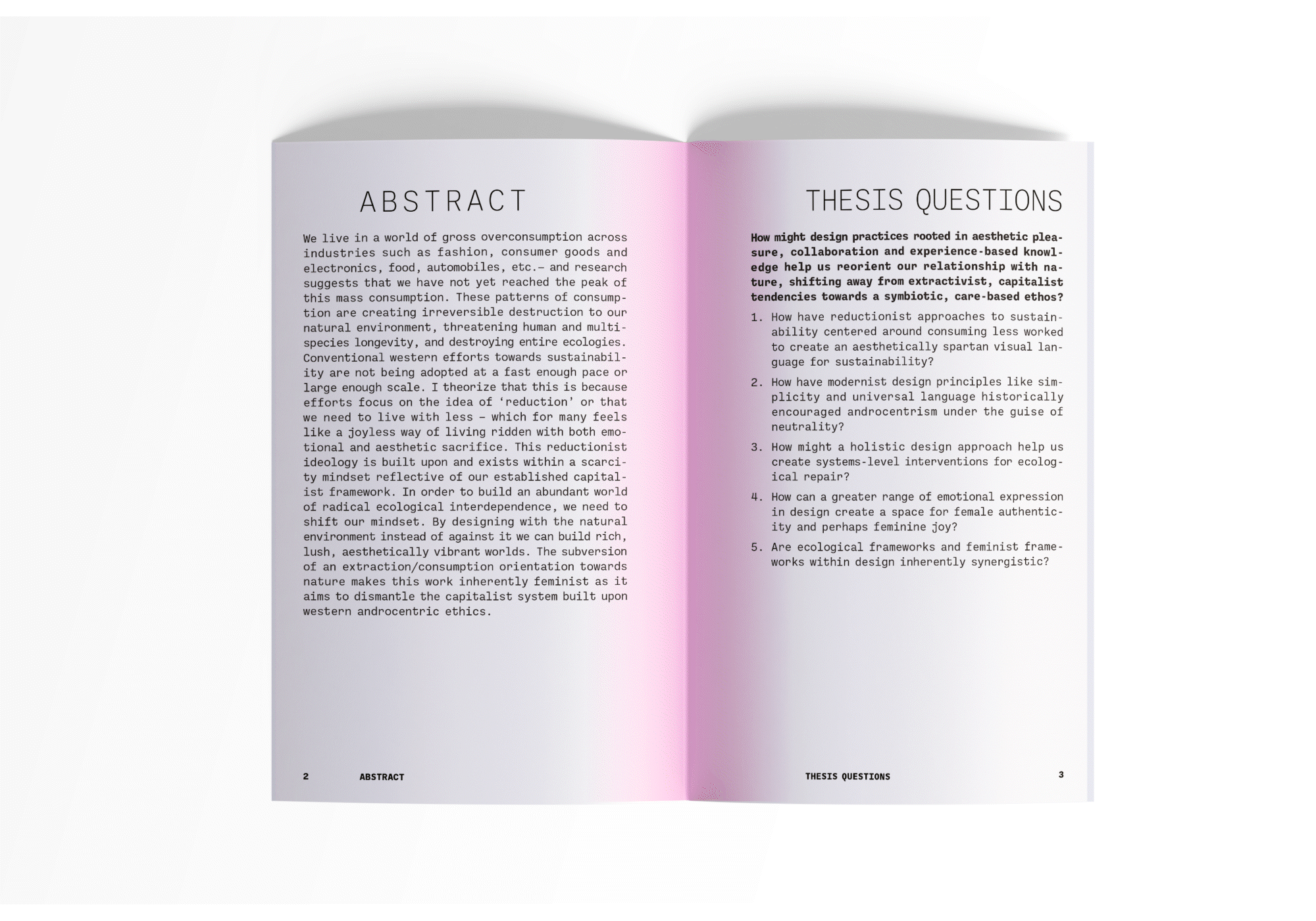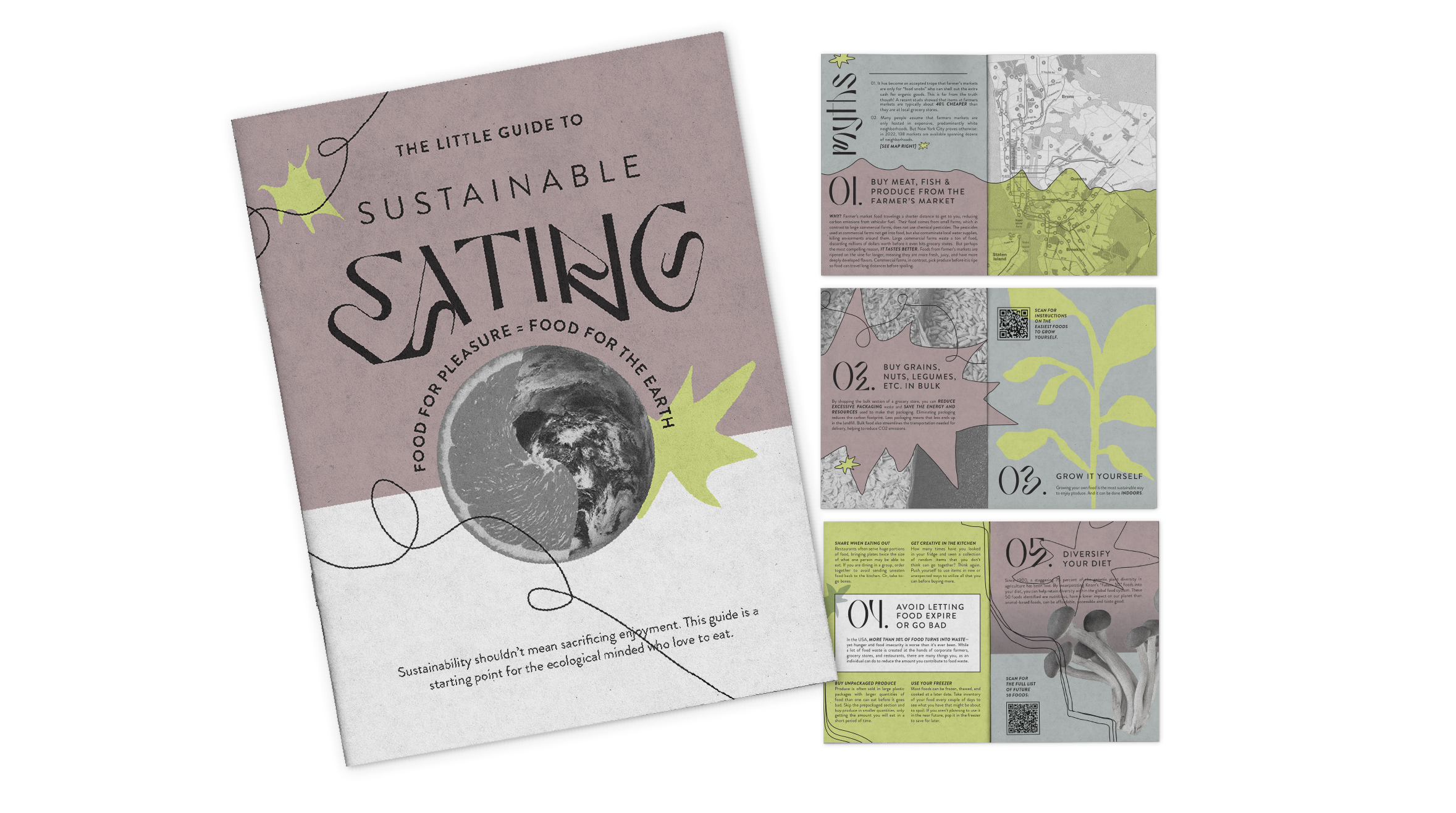Abundance in a Time of Destruction: Reimagining Frameworks for Sustainable Design
Abby Shuster
We live in a world of gross overconsumption across industries such as fashion, consumer goods and electronics, food, automobiles, etc.— and research suggests that we have not yet reached the peak of this mass consumption. These patterns of consumption are creating irreversible destruction to our natural environment, threatening human and multispecies longevity, and destroying entire ecologies. Conventional western efforts towards sustainability are not being adopted at a fast enough pace or large enough scale. I theorize that this is because efforts focus on the idea of ‘reduction’ or that we need to live with less — which for many feels like a joyless way of living ridden with both emotional and aesthetic sacrifice. This reductionist ideology is built upon and exists within a scarcity mindset reflective of our established capitalist framework. In order to build an abundant world of radical ecological interdependence, we need to shift our mindset. By designing with the natural environment instead of against it we can build rich, lush, aesthetically vibrant worlds. The subversion of an extraction/consumption orientation towards nature makes this work inherently feminist as it aims to dismantle the capitalist system built upon western androcentric ethics.

Thesis Book Selected Spreads

Posters
Left: Woman as Commodity, Earth as Commodity. Center: Ecological Design. Right: Finding Femininity in the Ecological
Less is Not More Zine
This zine outlines the 5 alternative frameworks for sustainable design which I explore in my thesis text. Each framework works outside of the capitalist lens, advising on sustainability tactics that do not ask us to live with ‘less’— less is not more.
Little Guide to Sustainable Eating
This zine explores ways to eat and grocery shop sustainably. The tactics focus on enriching one’s eating experience, as opposed to enforcing restrictions.
From Food Waste to Fabric Dye
For my capstone project, I dyed these swatches of fabric using food waste from my kitchen at home, turning what would have been discarded into long lasting and brightly colored dyes. Partaking in the creation of our own things satisfies not only aesthetic pleasure, but also an emotional connection between human and object. By participating in the design process, people transcend their role as “user” or “consumer,” generating a deeper care for our things and encouraging object longevity.